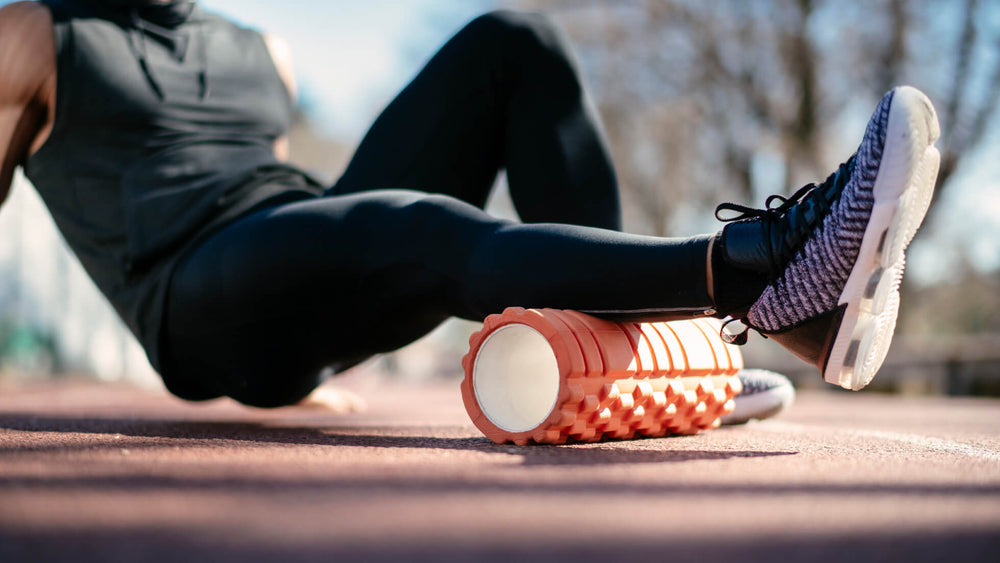Back to Basics: Stretching 101

In the age of ice baths, personalized nutrition, high-tech wearables, and more, it can be easy to lose sight of the simpler things that have a big impact on performance. One of the best things you can do is minimize or avoid getting injured. And one of the best ways to achieve that is good, old-fashioned stretching. But when it comes to stretching, is there an optimal time to do it? Are all stretches created equal? Is form important? And what do stretches really achieve within the body? Let’s dive in.
Timing
So should you stretch before or after working out? The answer is both! Stretching before exercise can improve yourrange of motion and decrease muscle soreness after a workout. By gentlylengthening your muscles, you increase your blood flow, which makes your body more pliable and better prepared for the rigors of exercise.
Post-workout stretching can help relieve muscle soreness and improve your flexibility over time. Holding stretches after exercise allows your muscles to fullylengthen and recover as inflammation subsides. This can be especially helpful for exercises that cause a lot of muscle tightness like running or weight lifting.
Form
For your pre-workout routine, focus ondynamic stretching that incorporates your fullrange of motion while gentlywarming up your body. The goal is to prime muscle groups for exertion, not exhaust them before you start. Examples include hip circles, arm circles, leg swings, shoulder shrugs,lunges with movement, torso twists, and easy squats. Stretching before working out also creates time for you to focus on breathing and how your body feels so you can better gauge what kind of effort you can sustain during your actual workout.
After your workout, you’ll want to engage in deeper,static stretches. When your muscles are warm and pliable after exercise, they’re primed for more restorative stretching. Focus on the kinds of stretches that use your body weight, a wall, the floor, or an exercise tool like a foam roller or lacrosse ball for more pressure. Examples include pigeon pose, supine figure four, bridge pose, downward-facing dog, forward fold, puppy pose, frog post, and upward-facing dog. There are numerous instructional videos on the the internet that you can use to gain insights on form for these yoga and stretching poses.
Injury and Pain Prevention
Injury prevention is absolutely one of the mainbenefits of stretching. When you exercise, you create tiny tears in your muscle fibers. Stretching helps flush out built-up lactic acid and bring in fresh, oxygenated blood to aid the recovery process. Intentionallylengthening and cooling down your muscles after an intense workout can enhance your body’s ability to repair muscle damage, lower therisk of injury, and reduce inflammation.
Additionally, taking 5-10 minutes at the end of your workout to stretch can also help your heart rate and breathing return to a resting state. This allows your body to properly return to rest and transition out of the high-intensity exercise state.
Beyond preventing acute injuries, aregular stretching routine can help releasefull-body aches and pains that plague most athletes who engage in strenuous exercise with any frequency. Common ailments likeback pain, neck pain, hip mobility, andglute strength can all be addressed and alleviated with just a few moments of dedicated body work, including static anddynamic stretches each day.
Finding the Right Routine for You
Athletes who primarily engage in exercise that utilizes the lower body — cycling, running, etc. — will want to focus on stretches that target thelower back,hip flexors,glutes, quads,hamstrings, calves, ankles, and feet. Athletes who use theirupper body more such as swimmers, weight lifters, and rock climbers will also want to incorporate stretches for the chest, shoulders, wrists, andupper back.
And even if you don’t get yourstretching routine 100% right at first, incorporating just 5–10 minutes ofbasic stretches into your day will help you reap the benefits of increased mobility, reduced injury risk, and enhanced recovery. Focus on what feels good to you and listen to what your muscles are telling you — your body will thank you!
Take the next step in your training regimen: Try any BRL Sports supplement risk-free! If our natural nutritional products aren’t the best you’ve ever used, simply return your purchase for a 100% refund — no questions asked!





